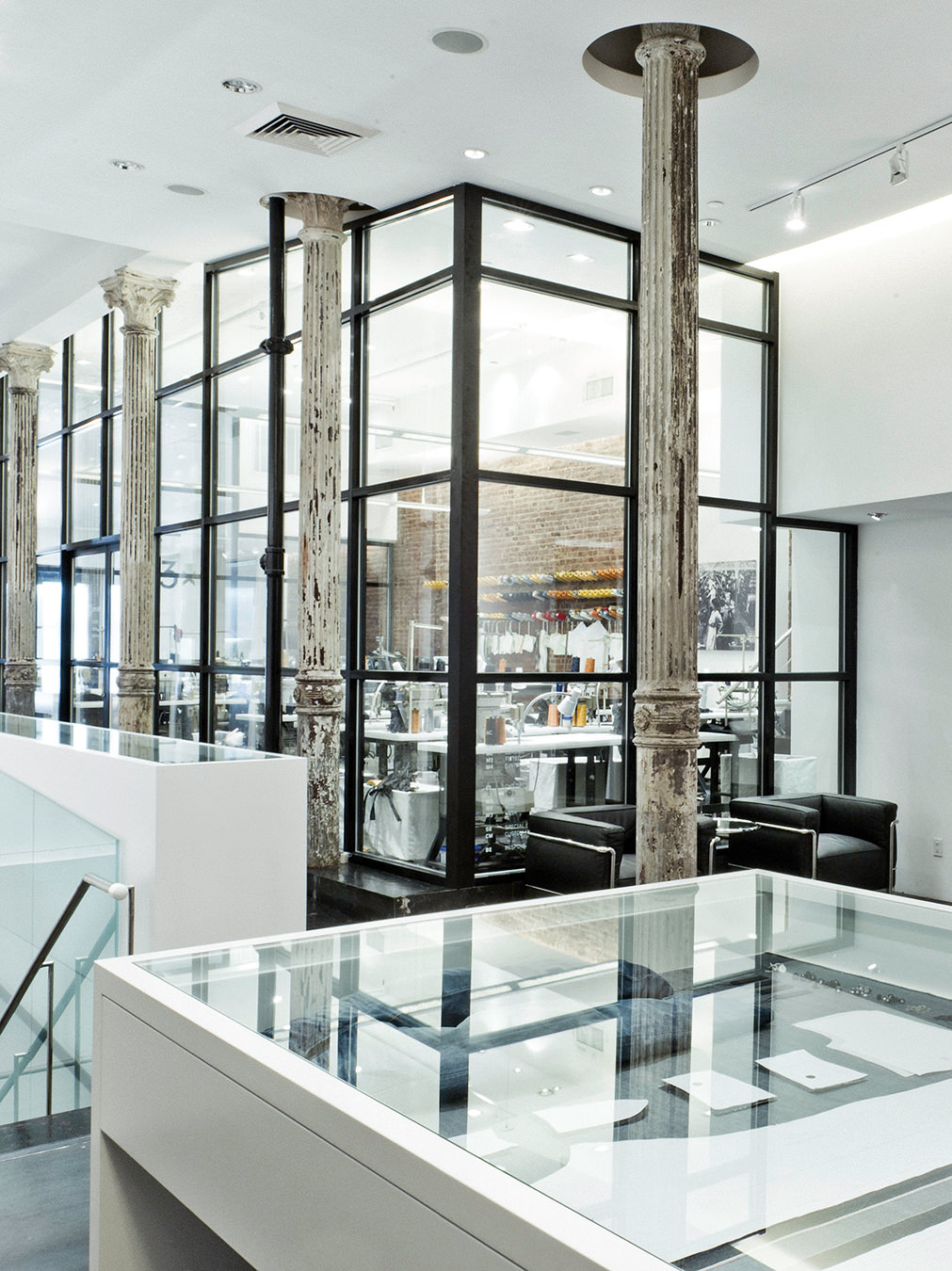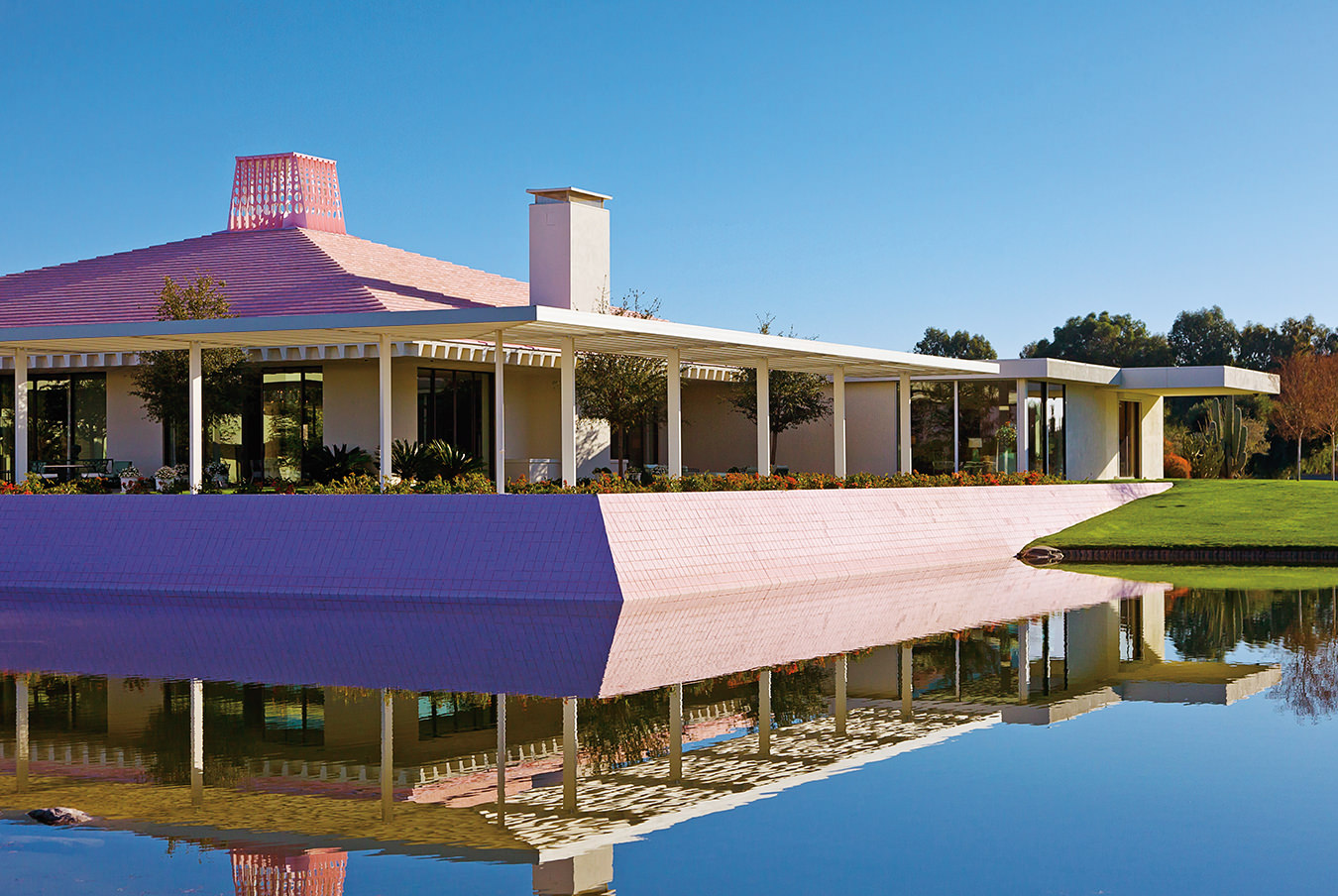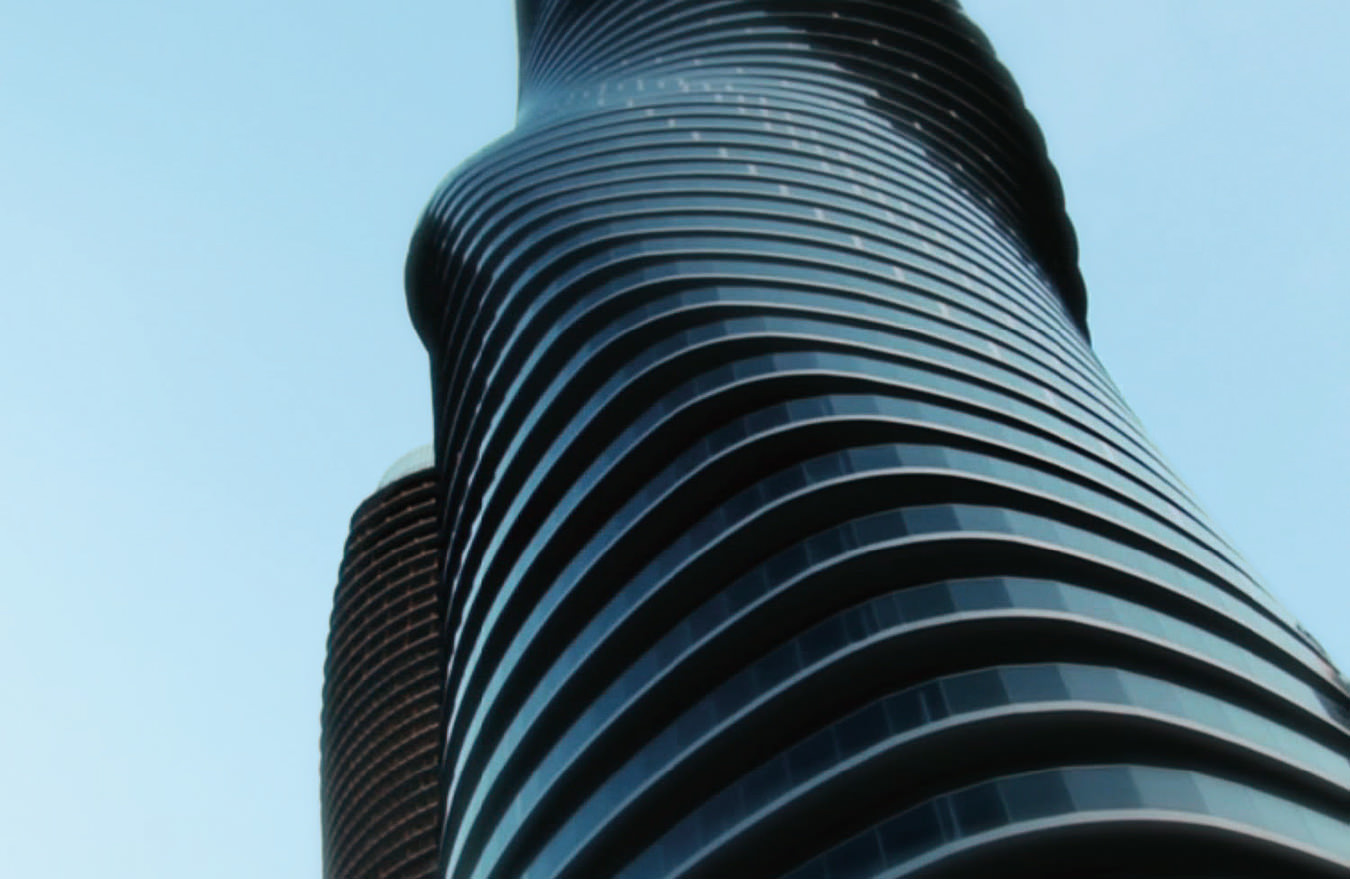Design Space: Café Mars by Format Architecture Office
A whimsical Italian eatery in Brooklyn.

With the tagline “An unusual Italian restaurant,” Café Mars, founded by chefs Jorge Olarte and Paul D’Avino, needed a space that reflected its wacky and playful ethos, one that would defy the typical red-and-white-checkered tablecloths and dark, candlelit corners of many Italian eateries. To bring the new concept to life, they approached New York design and architecture firm Format, which drew from a variety of Italian design cultural points, from the Amalfi Coast to notable 20th-century Italian designer Ettore Sottsass and his design collective Memphis, known for its colourful style.
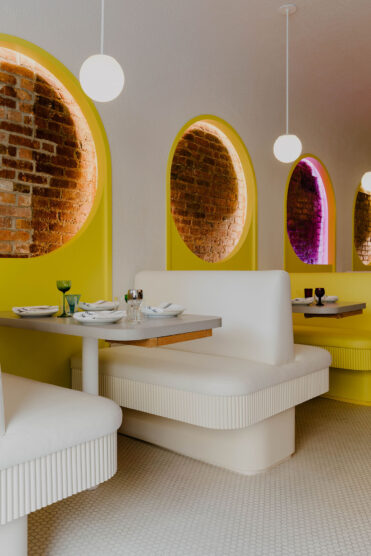
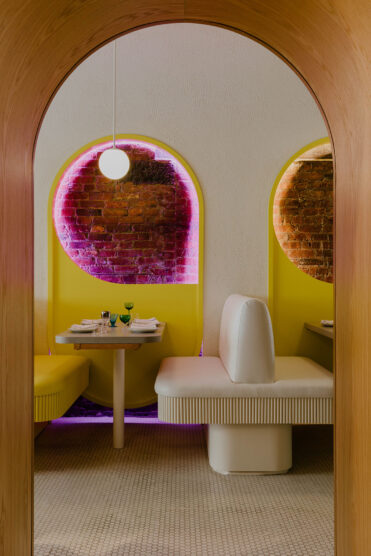
The 1,100-square-foot space in Gowanus, Brooklyn, is in a former pasta factory and Italian grocery store across the street from the home of chef D’Avino’s great-grandfather, who immigrated from Italy in 1901. The interiors reflect and build upon the restaurant’s culinary focus, which honours time-honoured Italian traditions while breaking stereotypes of what it means to be an Italian restaurant. Rather than focusing on a particular region, the chefs look to every facet of Italian culinary culture, even honouring offerings beyond the country’s borders, in the port cities of North and South America and the Japanese-Italian fusion itameshi.
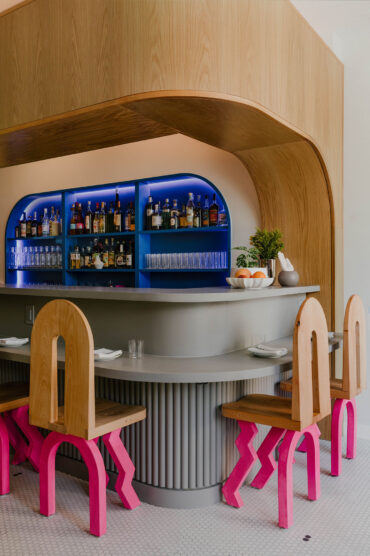
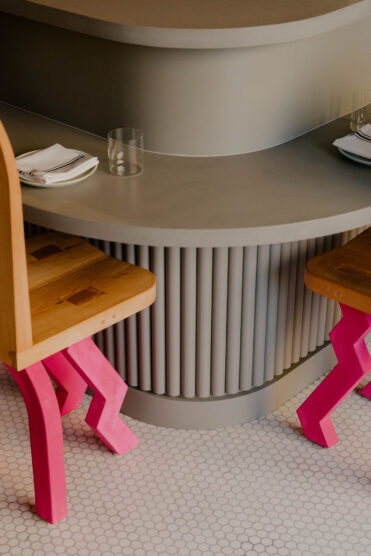
“It was important to connect the intent of the culinary experience with the intent of the spatial experience,” Format principal and co-founder Andrew McGee says. “If the driving force of the menu was to showcase knowledge and love of traditional Italian cuisine, twisted and subverted at just the right moments to create something playfully rebellious and unusual, it seemed only natural to reference the character and movement in Sottsass and the Memphis style with a similar vintage in the architecture and design realm.”
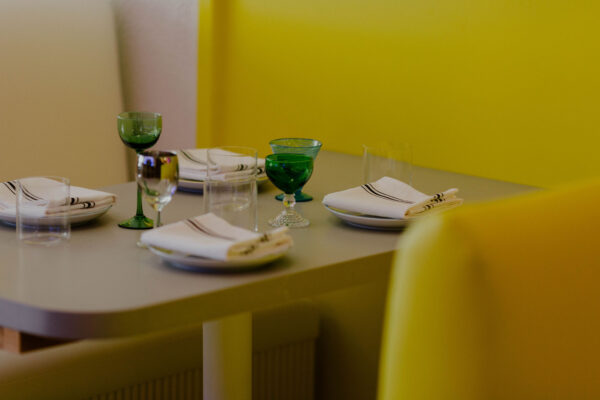

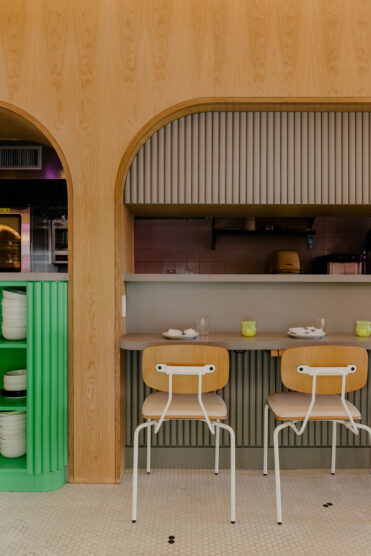
Format delivered an untraditional space, with a bright and colourful palette meant to reflect the diversity of the cuisine. Outside, black exteriors and a large oval window frame the neon haven waiting through the door, which has a pasta-die door handle sourced from local historic die manufacturers D. Maldari & Sons.
Inside, along the righthand wall, six booths with reeded trim around the seats alternate in colour between white and canary yellow. Circular cut-outs in the wall, accented with matching yellow paint, put a bit of the original brick on display to pay homage to the building’s history. Built-in LED lights in green, pink, and purple cast colourful neon hues on the brick, merging past and present.

The left side of the dining room is dominated by a grey L-shaped underlit bar with more ribbed detailing. At the bar, fantastical custom chairs by New York’s Studio Apotroes have bright-pink legs, u-shaped at the back and zig-zagged at the front, while farther down, Reece chairs by Grand Rapids Chair Co are sleek and industrial. Curved arches in the white-oak panelling reveal the cobalt-blue bar and the kitchen. “The goal was to strike a delicate balance between fanciful and comforting, transformative and familiar,” Format principal and co-founder Matthew Hettler says. “You want to stay at a place like Café Mars because the food is good, and the people are friendly.”
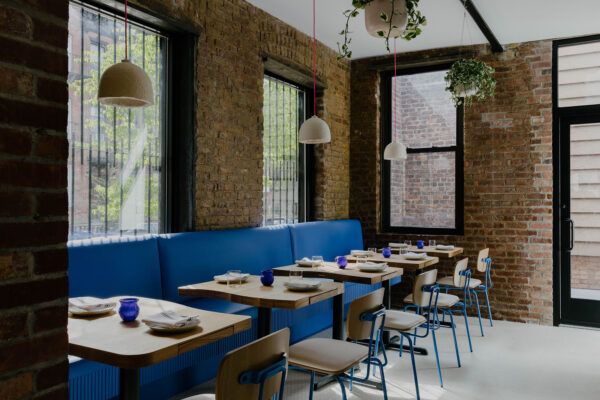

At the back, the Blue Dining Room keeps things simple but fun with blue banquette seating designed by Format, brick walls, big windows, and white tiles. Bowl-shaped MushLume pendant lights, made from biofabricated mycelium (mushroom roots), have hot-pink wiring to subtly match the bar chair legs at the front of the restaurant. Wooden tables by Todd Higuchi have curved edges that fit together for adaptable seating and hidden silverware drawers.

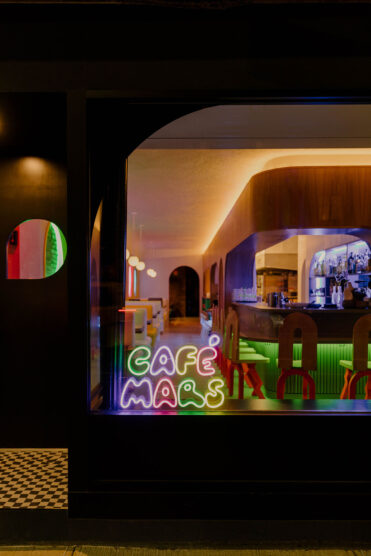
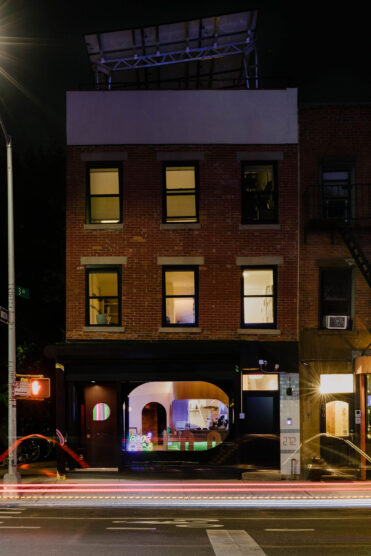
The space is bold without being cluttered, wacky without being ridiculous, and colourful without being childlike. Café Mars is a bright celebration of Italian culture for its chefs and an invitation for all to partake. “The design, however loud, becomes a backdrop for a quality experience, and that is something we are excited about,” Hettler says.
Photography by Nick Glimenakis.


